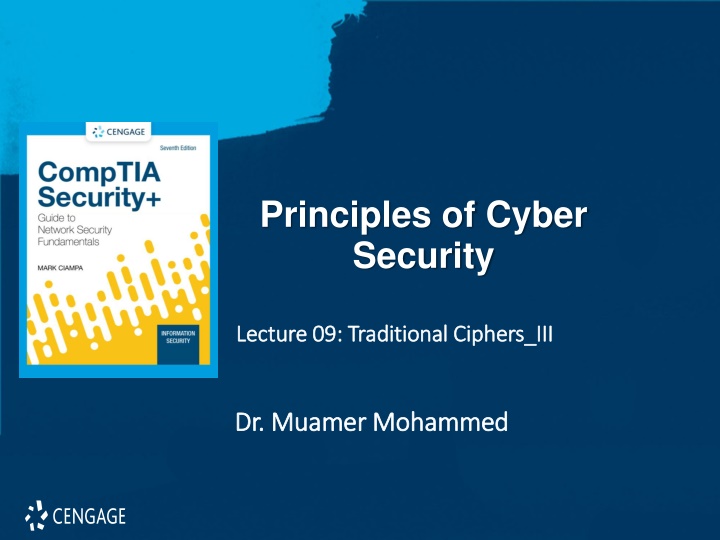
Traditional Ciphers III: Symmetric and Asymmetric Cryptographic Algorithms
"Learn about symmetric and asymmetric cryptographic algorithms, including their differences, strengths, and weaknesses. Explore common algorithms like DES, 3DES, and AES, and understand the importance of key distribution in secure communication."
Download Presentation

Please find below an Image/Link to download the presentation.
The content on the website is provided AS IS for your information and personal use only. It may not be sold, licensed, or shared on other websites without obtaining consent from the author. If you encounter any issues during the download, it is possible that the publisher has removed the file from their server.
You are allowed to download the files provided on this website for personal or commercial use, subject to the condition that they are used lawfully. All files are the property of their respective owners.
The content on the website is provided AS IS for your information and personal use only. It may not be sold, licensed, or shared on other websites without obtaining consent from the author.
E N D
Presentation Transcript
Principles of Cyber Security Lecture Lecture 09 09: : Traditional Traditional Ciphers_III Ciphers_III Dr. Dr. Muamer Muamer Mohammed Mohammed 1
Objectives 9.1 Describe symmetric, and asymmetric cryptographic algorithms.
Symmetric Cryptographic Algorithms Symmetric cryptographic algorithms use the same single key to encrypt and decrypt a document. Common algorithms include: Data Encryption Standard (DES) Triple Data Encryption Standard (3DES) Advanced Encryption Standard (AES) 3
Asymmetric Cryptographic Algorithms The primary weakness of symmetric algorithms: distributing and maintaining a secure single key among multiple users distributed geographically poses challenges Asymmetric cryptographic algorithms use two mathematically related keys. Also known as public key cryptography Public key available to everyone and freely distributed Private key known only to individual to whom it belongs 5
Summary Symmetric cryptography (also called private key cryptography) uses a single key to encrypt and decrypt a message. Asymmetric cryptography (also known as public key cryptography) uses two keys instead of one. 7






















